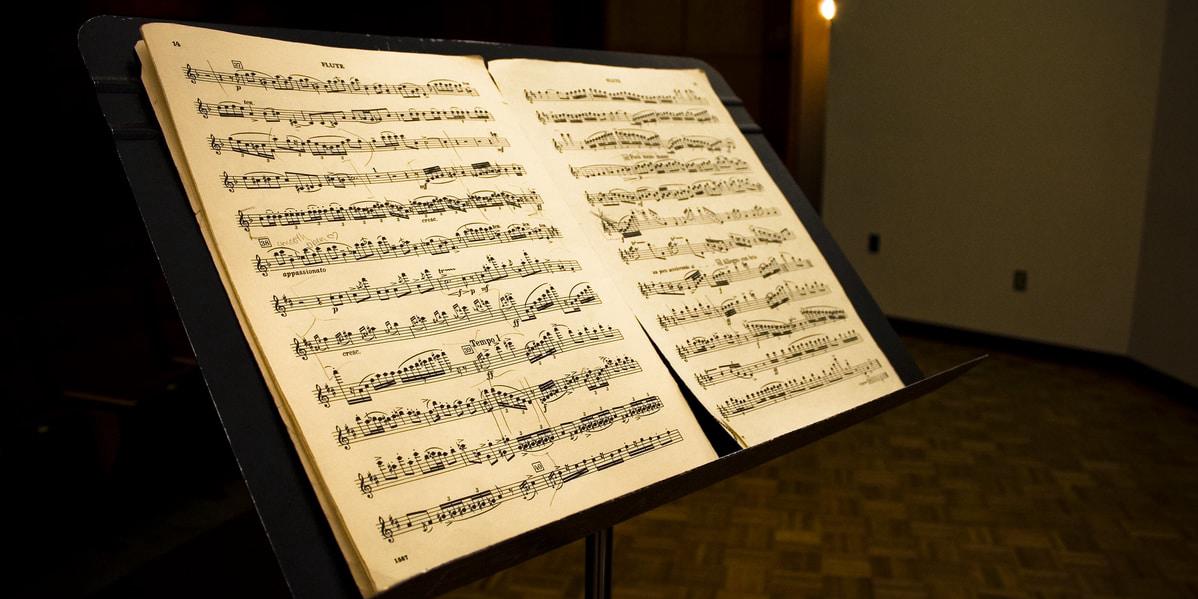It is very important that every clarinetist knows how to play the clarinet chromatic scale. The chromatic scale is important because it incorporates every note on the clarinet, as well as alternate fingerings for specific notes. Knowing the chromatic scale and chromatic alternate fingerings are important when it comes to advanced repertoire, auditions for All-State or honor bands, chair placements and ensemble auditions.
In this article, I will talk through chromatic alternate fingerings within each octave. I will also discuss tips and tricks for practicing the chromatic scale.
First octave / Chalumeau register
The chromatic scale begins on low E. From there, your right pinky will play low F. While your right pinky is playing low F, your left pinky is taking a small jump to the left over to the F# key. The left-pinky F# key is a chromatic alternate fingering. To check if you're depressing the correct key for left-pinky F#, press down on the normal F# key with your right pinky. The left-pinky F# key should move as well. It's more common for clarinetists to learn low F# with their right pinky. However, it is less cumbersome and more fluid for the pinkies to use the left-pinky F# fingering.
The next alternate fingering that you will encounter is going from Bb to B-natural. When learning fingerings, you learn that Bb is thumb, 1st, 2nd, and 3rd fingers (left hand), and right hand is just the 1st finger. Similarly, B-natural is thumb, 1st, 2nd, and 3rd fingers (left hand), and then only 2nd finger in the right hand. However, when playing these fingerings in the chromatic scale, it will cause your fingers to "flip-flop". Instead of flip-flopping the fingers, you can use what I like to call the banana key. The banana key is the little sliver key in between the second and third tone hole on the bottom joint. This banana key allows you to play a b-natural without the flip-flop. In order to play the chromatic alternate b-natural, you'll finger the normal Bb fingering and then press the banana key down with your ring finger.
In these videos, the clarinetists explains and shows the fingerings and alternate fingerings for each octave of the chromatic scale.
Throat tones
The first alternate fingering that you will encounter when playing throat tones will be F to F#. To play throat-tone F, only the left thumb is pressed down on the thumb hole. To play throat-tone F#, only the first finger is pressed down on the first tone hole. Similar to the Bb to B-natural fingering, playing F to F# with those two fingerings will cause your fingers to flip flop. The chromatic alternate fingering for F# is fingering normal F with the thumb and then adding the bottom two side keys on the right side, played with your right index finger.
Second octave / Clarion register
All of the alternate fingerings in the clarion register are the same as the chalumeau register. The only difference is there are no throat tones once you reach thumb high-C.
Third octave / Altissimo register
In this octave, there are many alternate fingerings. However, these fingerings are not necessarily required. Rather, they are used based on personal preference. This is because certain fingerings can make the pitch more clear or in tune, but those fingerings are not sensible when playing the chromatic scale or chromatic passage in repertoire at a fast tempo. The alternate fingerings for the notes in this register are commonly found in fingering charts. I recommend taking the time to play through each fingering and writing down the qualities for each fingering. For example: "Fingering one makes the sound more in tune, but the fingering is difficult if I were to play it at a fast tempo".
She begins explaining the third octave at the 4-minute mark:
Practicing the chromatic scale
Break it down
There are a lot of notes and fingerings to remember when playing the chromatic scale. It will be too overwhelming to try and learn all three registers right away. Break the chromatic scale down into small chunks. I suggest practicing one octave at a time. Chunking the chromatic scale allows you to focus on small ideas, as well as help you memorize the fingerings.
I have been playing the chromatic scale for 11 years and I still have to break it down when I practice it. Breaking it down helps me isolate my problem spots. Once I find out what the problem is, I only practice those fingerings or transitions.
Go slow
Speed is the enemy when learning the chromatic scale. Sure, it sounds cool when you hear an advanced clarinetist play the chromatic scale at a fast tempo. It sounds so seamless and effortless. However, they too had to practice the scale at a slow tempo. Practicing the chromatic scale at a slow tempo allows you to concentrate on your fingers, the evenness of each note, breath control and air speed. Once you feel comfortable playing the scale at a slow tempo, keeping in mind all of the aspects listed above, you can gradually increase the tempo.
When I was in high school, playing the chromatic scale faster than my peers was my only goal. In my mind, playing the chromatic scale fast meant I was a more advanced player. Don't be me! Even though I could play the chromatic scale at a fast tempo, my fingers would skip over notes, my fingers would accidentally slide off the pinky keys, my breath support and air speed weren't controlled and I was not playing with a good sound.
Practice with a metronome
Always practice with a metronome. Not only does the metronome keep your tempo steady, but it also maintains the evenness of the notes.
Start on different notes
Starting on different notes of the chromatic scale will help in many ways. First, it will help ingrain the fingerings into your memory. Second, it will help you when playing a chromatic passage in repertoire. Composers utilize the chromatic scale in a variety of ways. Lastly, it will make practicing the scale more fun.
Consistent sound
Every note is important. Listen while you play to make sure that each note is being played to its full value. Furthermore, use supported air from the diaphragm and controlled air speed to ensure that each note is played with a full, rich and projected sound.
Relaxed hands
Keeping your hands in a relaxed position is very important. If you lift up your fingers too much, it will be more difficult to play the chromatic scale at a faster tempo. Furthermore, it is helpful to hover your fingers over the keys you will have to play next. Hand and finger positions can be tricky, so I recommend recording your hands with a device. This way you can see your fingers and isolate any problems that you may have.
Closing advice
The chromatic scale is never perfect right away. Like any other piece of music, this scale takes a lot of time and patience. Practice diligently and daily, have patience, practice slowly, break it down, and believe in yourself!




